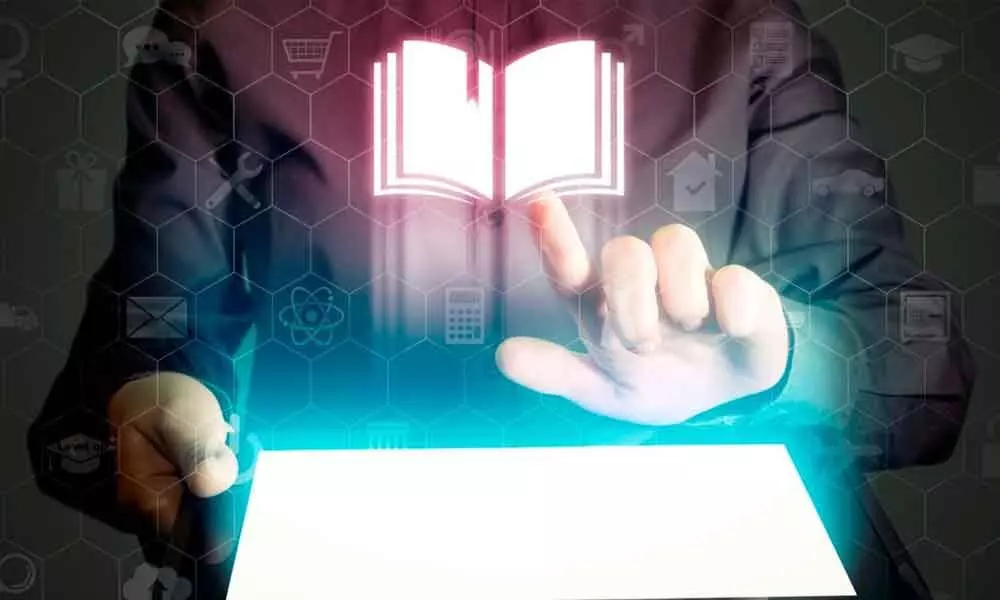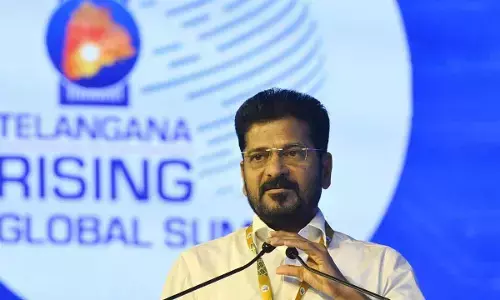The modifications in the digitization of education

The word 'Digitization' holds deeper meaning from evolution to adaption; it has diversified to a better and broader space.
The word 'Digitization' holds deeper meaning from evolution to adaption; it has diversified to a better and broader space. Digitization has taken a leap in the education sector, and in the last ten years, various methodologies have been introduced and implemented with newer techniques.
The technology has remodelled the education sector, and the traditional mode of teaching and learning has moved towards modern methods in India. As a result, the education sector has undergone a massive transformation from various schools, colleges, or higher institutes.
One of the critical factors transforming the education sector is vast internet penetration. According to a recent study, the internet penetration rate will reach above 55 per cent by the end of 2025 in India, making the digitization of education one of the top priorities for the government in India.
Globally, the education sector has seen some significant transformations. As a result, schools, institutes, and corporates are also religiously working to adopt this change in India.
Additionally, the state and central government is closely moving towards bettering students and society by emphasizing quality education. Recently, the government of India announced a new National Education Policy (NEP) that emphasizes digitization besides the use of technology in the education sector. It also focuses on ed-tech solutions that strengthen education in rural areas.
Factors Leading towards Digitisation:
Smart Classrooms
With the new age of technology entering the industry and seeing longer sustenance, the traditional method of teaching and learning is fading away. Today, educators from all grades realize the benefits of technology in the classroom. Today, an innovative and technology-equipped classroom has a computer, audio-visual equipment, and a smart interactive whiteboard.
Lack of internet connections, infrastructure, and minimal tools is still one of the critical challenges for educators. However, these educators prefer tech-enabled classrooms to ease the teaching and learning methodology. As India is accepting and moving towards tech-equipped classrooms, the teachers have begun to shift their teaching, instructions, assessments at a much faster rate than expected. These trends in the education sector hold a more significant impact on the students learning.
Many schools and educational institutes have already opted to convert their schooling process into smart and innovative learning practices in metro cities. At the same time, some of the Tier II cities are implementing these methods.
As smart classrooms are becoming a boon to the education sector, many companies, including tech, have started to develop products and solutions that are technology-driven and have positive implications in improvising India's smart education system. Therefore, it is essential to create an innovative, user–friendly and high–end features product that will blend with the concept of smart class and cater offerings that work with our end users.
Online Teaching and Learning Methodology
School and higher education institutions also face challenges regarding their digital preparedness. Lack of equipped tools, proper teaching software, and various other modes is a must for all online teaching and learning methods.
However, many e-learning portals have developed and performed well in the last ten to twelve years. Realizing that rapid development depends on widespread education and technology has proven to be a powerful medium to reach small towns and villages. Online teaching is a massive tech disruption in education and has been successful.
Collaborative Software for Education Professionals
To aid the teaching and learning experience, schools and institutes are implementing various software which can connect and collaborate more effectively. Adjusting with new teaching methodology to deliver efficient learning opportunities, the new-age software is equipped with file sharing, video conferencing, and chat features. These tools allow teachers to interact with students from anywhere and extend learning beyond traditional classrooms.
In addition, it help users manage work, create and share documents, help track students' progress, and stay connected to peers, students, and parents.
Hybrid Mode
The hybrid learning model has paved the way for digital transformation to the education sector. Since COVID-19, hybrid learning is becoming the need of the hour and assists the teachers/children yield education for offline and online mediums.
Hybrid learning model has helped schools and educational institutions to accept the new normal, and has become a one-stop solution showcasing various platforms and solutions that have eased the education system widely across India. In other words, with an integrated mix of hardware and software solutions, the hybrid model has evolved and bridged the gap of learning and accessibility to teaching.
Giving the model more comprehensive experience, different types of products are being developed to ease the teaching for educators. Interactive Flat Panels (IFP) is one of the most prominent products ideal for both educators and corporates. A high-quality display with a better interface, enhanced connectivity and built-in software solutions has become prevalent giving a classroom a smart overlook. It is an all-in-one solution offering an immersive and efficient experience to teachers and students.
As the hybrid model is propelling in the education sector, various products and solutions are gaining momentum to boost the ecosystem at a large scale.
Artificial Intelligence, Augmented Reality, Virtual Reality
AI and VR technology have gained significant momentum across the world. These advanced technologies have been succeeding in making learning collaborative and interactive. In the coming years, a vast transformation will enhance educators' teaching methods while simultaneously creating immersive lessons that are fun and engaging for the student. For instance, virtual reality can bring the outside world into the classroom and vice versa.
The immersive technology trends have digitized the education sector and there will be a massive transition of SmartBoards and tech-equipped products instead of Black Boards and traditional classrooms.
(The author is a Vice President Sales and Marketing, ViewSonic India)

















